Unclogging Dryer Vents for Optimal Performance
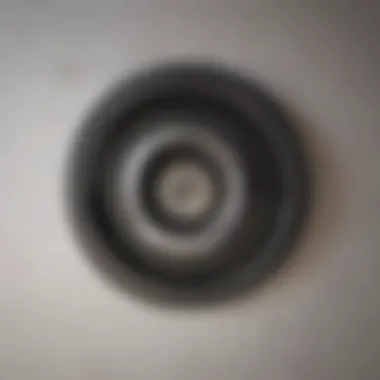
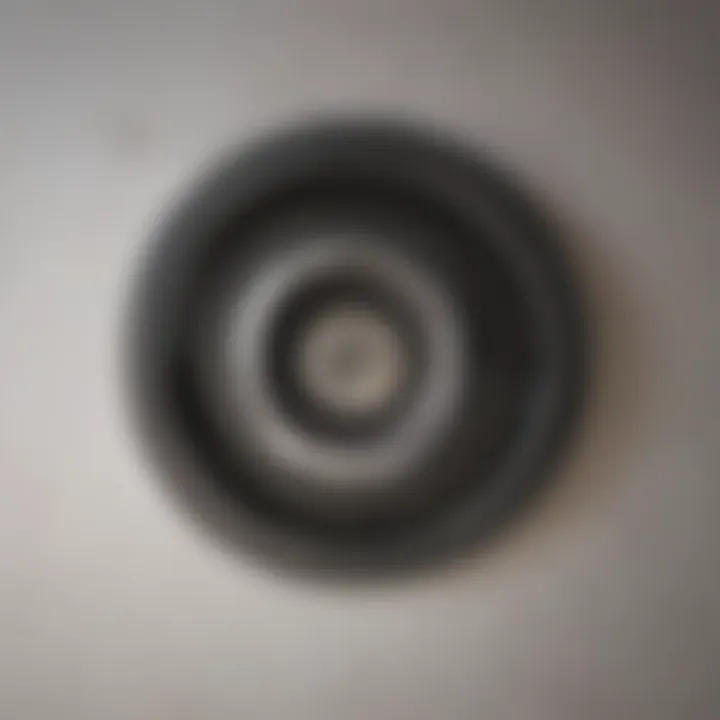
Intro
Dryers are essential appliances in modern homes, but they come with their own set of maintenance needs. One critical aspect that often goes overlooked is the state of the dryer vent. Clogged dryer vents not only hinder the efficiency of the appliance but can also lead to hazardous situations such as fires. Understanding how to properly maintain and clean the dryer vents is key for homeowners looking to ensure the longevity and safe operation of their dryers. This guide will explore the signs of a blockage, effective cleaning methods, and preventative measures to promote optimal dryer performance.
Importance of Unclogging Dryer Vents
Unclogging dryer vents is vital for multiple reasons. First, it enhances the efficiency of the appliance. A clean vent allows moist air to escape, reducing drying times and energy costs. Second, it prevents potential fire hazards. According to the U.S. Fire Administration, failure to clean dryer vents is a leading cause of house fires related to home appliances. Lastly, regular maintenance can extend the lifespan of your dryer, saving you the cost of replacement.
Signs of Clogged Dryer Vents
Recognizing the signs of potential blockages is the first step in effective maintenance. Here are some indicators:
- Clothes take longer to dry than usual.
- The dryer feels excessively hot to the touch after use.
- A musty smell emanates from the dryer or laundry.
- Fluff or lint being found in or around the dryer area.
- The vent hood flap does not open properly during operation.
These signs should not be ignored. Addressing them promptly can reduce the risk of danger and improve your dryer’s performance.
Methods for Effective Cleaning
Cleaning dryer vents can be approached in several ways. The method you choose may depend on your comfort level and the specific constraints of your dryer setup.
DIY Methods
For those willing to take on the task personally, here are some approaches:
- Using a Vacuum: Detach the vent and use a shop vacuum to remove lint buildup. Make sure to clean both ends of the vent.
- Brush Kit: Investing in a dryer vent cleaning brush kit can be very effective. Follow the instructions carefully for the best results.
- Lint Traps: Regularly clean the lint trap before and after every use; this is a basic but essential practice.
Professional Services
If the blockage is severe or hard to reach, hiring a professional cleaning service is advisable. They have specialized tools and expertise to thoroughly clean the vent systems.
Preventative Measures
To maintain dryer efficiency, implementing preventative measures is crucial. Consider these practices:
- Regular Inspections: Schedule inspections at least once a year.
- Avoid Overloading: Do not overload your dryer, as this can strain the vent system and reduce efficiency.
- Upgrade Venting Material: Ensure your dryer vent is made of metal, as plastic vents can trap heat and are more prone to clogs.
Important: Regularly inspecting and maintaining your dryer vent can save homeowners from costly repairs and ensure safety.
End
Understanding Dryer Vents
Understanding dryer vents is a crucial aspect of maintaining the efficiency of your dryer. A well-functioning dryer vent ensures that excess moisture and lint escape from the appliance, preventing various problems such as increased drying times and energy waste. Engaging with this topic allows homeowners to comprehend the complexities behind dryer operation and the vital role vents play in the overall performance of the appliance.
Definition and Function
Dryer vents are specifically designed ducts that convey warm, moist air from your dryer to the outside of your home. They are essential for effective drying cycles. When clothes are placed inside a dryer, heat is applied, and this heat causes moisture to evaporate. The dryer vent's primary function is to transport this moisture-laden air outside, rather than allowing it to accumulate in the dryer itself.
The importance of dryer vents cannot be overstated. They help in keeping your dryer working optimally and reduce the risk of house fires caused by overheating. It's worth noting that a blockage in this vent can cause moisture to back up into the dryer, leading to mold growth and potential damage to the appliance. Moreover, an efficiently functioning vent works in tandem with the dryer’s exhaust system, paving the way for energy savings and effective laundry management.
The Path of Moisture
The path of moisture in a dryer begins when a wet load is placed in the appliance. As the dryer heats up, moisture evaporates, and the air becomes saturated. This humid air is then drawn into the dryer vent by a fan mechanism. A clear, unobstructed vent allows the moist air to escape freely into the outside environment.
When discussing this process, various factors come into play. The length and configuration of the duct can affect airflow. For instance, rigid ducts tend to provide better airflow than flexible ones. Long duct runs or those with many bends can cause airflow restriction that increases drying times and energy consumption. Together with possible lint blockages, these factors emphasize the importance of understanding your dryer vent type and managing its path for effective ventilation.
In summary, recognizing how dryer vents function and the journey of moisture is essential for effective dryer maintenance. Homeowners are encouraged to inspect their vents regularly, ensuring that the mechanisms work as intended and that blockages do not occur.
Recognizing Clogs
Recognizing clogs in dryer vents is a fundamental aspect of maintaining dryer efficiency. Timely identification can prevent further complications associated with blockages. Moreover, awareness of warning signs enables homeowners to act swiftly, which can safeguard both appliance longevity and household safety. In this section, we explore the symptoms of blockage and potential consequences, highlighting their significance in effective dryer maintenance.
Symptoms of Blockage
Longer Drying Times
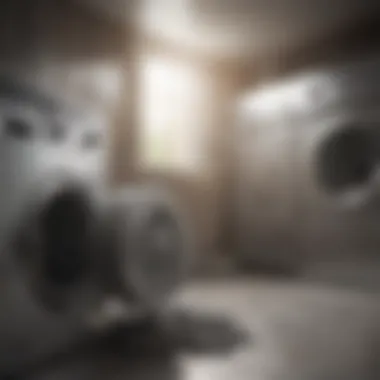
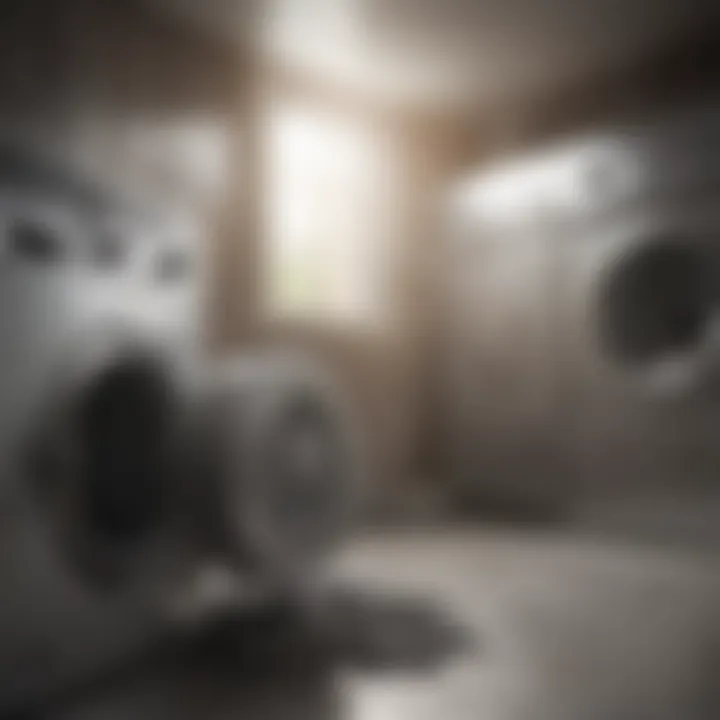
Longer drying times is often the first indication of clogged dryer vents. When a vent is partially obstructed, it prevents hot air and moisture from escaping efficiently. As a result, the dryer works harder to achieve the desired dryness in your clothes. This inefficiency not only affects performance but also increases energy consumption, leading to higher utility bills.
Key characteristics of longer drying times include obvious delays in achieving the expected dryness. Clothed items come out damp, requiring additional cycles. Such a situation can be particularly frustrating for users relying on the dryer for everyday tasks. While it is fairly common for drying times to vary due to load size or fabric type, a consistent increase is a strong warning signal.
Burning Smell
A burning smell from the dryer is a serious symptom of potential blockage. This odor often arises when lint accumulates and obstructs airflow, causing overheating within the appliance. When this occurs, it poses a significant fire hazard, making it critical for homeowners to address the situation immediately.
The presence of a burning smell highlights a dangerous combination of reduced airflow and excessive heat. Ignoring this warning can lead to substantial damage, including fires that can endanger lives and property. It is crucial to act swiftly, ensuring thorough cleaning and, if necessary, professional assistance.
Increased Lint Accumulation
Increased lint accumulation in the dryer lint trap or around the vent is another clear indicator that clogs may be forming. Lint is a natural byproduct of the drying process; however, excessive buildup can indicate that the venting system is not functioning optimally. When lint accumulates, it restricts airflow and contributes to the heat buildup discussed earlier.
The unique feature of increased lint buildup is its visual evidence of a clog. Homeowners should regularly check and clean the lint trap after each load. If there is significant lint noted beyond the typical amount, action should be taken to clear the system entirely.
Potential Consequences
Fire Hazards
Fire hazards are perhaps the most concerning potential consequence of clogged dryer vents. The National Fire Protection Association indicates that malfunctioning clothes dryers are a leading cause of home fires. The accumulated lint acts as a highly combustible material, creating a risk of ignition when exposed to high temperatures.
Such hazards can lead to devastating losses, and therefore should not be overlooked. Fire prevention requires diligence in maintenance, including regular vent inspections and cleaning.
Energy Inefficiency
Energy inefficiency results when dryers cannot expel air properly due to clogs. Inefficient dryers can double energy expenditures, necessitating a commitment to thorough maintenance. Homeowners may find that regular use of a clogged dryer consistently increases their utility bills significantly. Neglecting this issue can thus lead to an unnecessarily heavy financial burden.
Appliance Damage
Clogs can also lead to long-term appliance damage. The added strain on the dryer’s motor and heating elements can result in costly repairs or replacements. Understanding the potential for reduced lifespan gives homeowners motivation to undertake regular checks and maintenance, ensuring their appliance remains functional for years.
By recognizing the signs and consequences of dryer vent clogs, homeowners can take proactive measures to maintain their dryers. This section underscores the need for vigilance and swift action in addressing any symptoms that may arise.
How to Unclog a Dryer Vent
Unclogging the dryer vent is a critical task for maintaining household safety and ensuring appliance efficiency. When dryer vents are blocked, moisture and heat are unable to escape, causing longer drying times and increased risk of fire hazards. Regularly clearing these vents can enhance the performance of the dryer, while also saving energy. This section will detail essential methods for unclogging dryer vents, emphasizing the importance of proper techniques and best practices.
Preliminary Steps
Safety Precautions
Before undertaking any cleaning task, safety should always be the first consideration. Unplugging the dryer is a basic yet vital step. This action prevents any accidental activation of the dryer while you are working on it. Furthermore, wearing gloves can protect your hands from debris and sharp edges found in the vent. Using a dust mask or respirator can also reduce inhalation of dust and allergens that may have accumulated. Taking these simple measures decreases the risk of injury and promotes a safer working environment.
Gathering Tools
Having the right tools can make the process of unclogging a dryer vent efficient and smooth. Essential tools include a vacuum cleaner equipped with a hose attachment, a screwdriver, and an auger brush for deeper cleaning. A flashlight can be valuable for illuminating dark areas. Ensuring you have these tools ready means a more organized approach. Having the correct tools can also make the task less daunting and save precious time during the cleaning process.
Manual Cleaning Techniques
Using a Vacuum
Using a vacuum is one of the simplest methods to remove lint and debris from the dryer vent. A vacuum equipped with a hose attachment allows for a thorough cleaning. This method is effective at targeting loose lint without creating a mess. It’s a beneficial choice since it facilitates easy collection of debris for disposal. While using a vacuum is efficient, it may not remove stubborn clogs due to lint buildup deep inside the vent. Thus, it should be part of a more extensive cleaning strategy.
Removing the Vent Hose
Sometimes, it is necessary to remove the vent hose for a more thorough cleaning. This step involves detaching the vent from the dryer and the exterior vent outlet. By doing this, you gain access to both ends, allowing for the removal of dense buildup of lint and other obstructions. This method can be more labor-intensive but results are often more satisfying because it allows a complete cleaning of the vent pathway. Note that reinstalling the hose should be done carefully to avoid any leaks.
Professional Services
When to Call an Expert
While many cleaning tasks can be handled by homeowners, there are situations that require professional assistance. If you notice persistent issues like poor drying performance or if you haven't cleaned the vent in over a year, professional help may be warranted. Experts have specialized tools and experience that enable them to tackle severe blockages effectively. Relying on a professional service can save time and ensure that the job is done right, decreasing the chance of further complications.
Choosing a Reliable Service
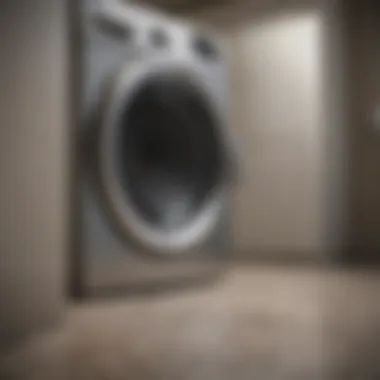
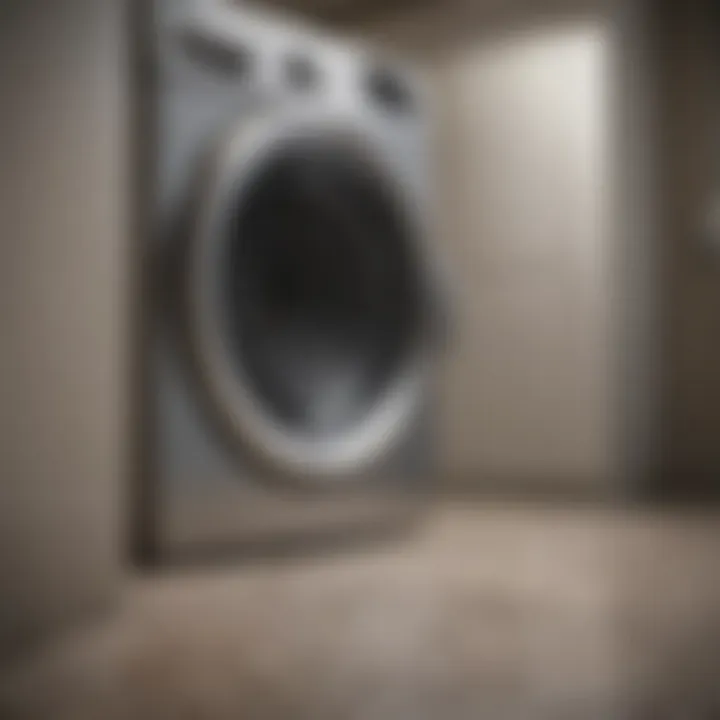
Finding the right service provider is essential for effective vent cleaning. When choosing a provider, consider their reputation, experience, and customer reviews. Services offering free estimates can provide transparency in pricing. Additionally, verifying that the service complies with local safety codes is crucial. A reliable service ensures that you receive quality work that enhances your dryer’s efficiency and safety.
Preventive Maintenance
Preventive maintenance is essential for ensuring that dryer vents operate efficiently and safely. Ignoring this crucial aspect can lead to increased energy costs, potential hazards, and even appliance failure. By implementing regular maintenance practices, homeowners can significantly reduce the likelihood of clogs and ensure optimal functioning.
Regular Inspection Timelines
Establishing a timeline for regular inspections of the dryer vent system is a key component of preventive maintenance. Inspections should occur at least every six months, although more frequent checks may be warranted depending on usage patterns. For instance, households that operate dryers heavily, such as those with large families, may need to inspect vents every three months. Regular inspections can help identify early warning signs of blockage, such as reduced airflow or excessive lint buildup. Addressing issues promptly prevents more significant problems later on.
Efficient Drying Practices
Avoiding Overloading
Avoiding overloading the dryer is an effective practice that enhances overall efficiency. When a dryer is overloaded, it struggles to circulate air properly, leading to longer drying times and increased wear on the appliance. A key characteristic of this practice is that it allows for optimal air circulation and more even drying of clothes. As a result, energy consumption decreases, making it a cost-effective choice for homeowners. One disadvantage, however, is that doing multiple smaller loads can feel less efficient in terms of time management. Still, the long-term benefits outweigh this minor inconvenience.
Using Proper Dryer Settings
Using proper dryer settings is another specific aspect that contributes greatly to maintaining dryer efficiency. Different fabrics require different heat settings to dry correctly. By selecting the right cycle, users can ensure that clothes dry without unnecessary energy expenditure. This practice helps to avoid damage to clothing as well, reinforcing its importance. A unique feature of using the correct settings is that it prolongs the lifespan of both the dryer and the garments being dried. The disadvantage may include needing to familiarize oneself with the settings available, but the overall benefits are significant.
Lint Trap Maintenance
Maintaining the lint trap is integral to the effective operation of the dryer. A clean lint trap ensures maximum airflow and reduces fire risks associated with accumulated lint. Homeowners should clean the lint screen after every use, but regular deep cleaning of the trap and ductwork is also necessary. This simple task is often overlooked, yet it is critical for optimizing dryer performance and enhancing safety. Failure to maintain the lint trap could lead to increased drying times, unnecessary energy consumption, and hazardous conditions.
Ensure that the dryer venting system is clean and in good condition to maintain efficiency and safety.
By prioritizing preventive maintenance, individuals can extend the life of their dryers while ensuring a safe laundry environment. These practices foster good habits that benefit not only the appliance but also the household as a whole.
Understanding Venting Systems
Understanding the various types of venting systems is essential for maintaining dryer efficiency and safety. Each venting system has its own characteristics and implications for how effectively they direct moisture and warm air from the dryer. The right system can significantly affect drying times, energy consumption, and overall appliance health.
Types of Venting Systems
Rigid Ducts
Rigid ducts are typically made from metal, which gives them durability and a smooth internal surface. This smoothness helps minimize airflow resistance, enabling better moisture removal from the dryer. One key characteristic of rigid ducts is their ability to withstand heat and pressure. This makes them a beneficial choice for venting systems, as they reduce the risk of fire hazards.
However, installation can be more complicated due to their inflexible nature. In some spaces, finding the right fit can be a challenge. Proper installation is crucial; any bends or turns could hinder airflow and collect lint, reducing efficiency.
Flexible Ducts
Flexible ducts are made of thin material that can bend easily, allowing for simpler installation in tight spaces. Their flexibility makes them a popular choice, especially in situations where rigid ducts would not fit. However, these ducts can have disadvantages. The material is generally less durable than metal and can crush or kink, which obstructs airflow. They can also accumulate lint more quickly due to their texture.
Ideal usage of flexible ducts involves minimal bending and keeping them short. Regular inspection and maintenance are key factors in ensuring that these ducts do not become a blockage risk.
Dedicated Exhaust Systems
Dedicated exhaust systems are designed solely for dryer ventilation and do not share ducts with other systems, such as bathroom or kitchen exhausts. This separation is a fundamental characteristic of these systems, promoting better airflow and reducing the chance of clogs from other sources.
A unique feature of dedicated exhaust systems is their installation, often requiring professional services due to specific building codes and standard practices. While they may incur higher upfront costs, the long-term efficiency and safety can be worthy investments. A properly installed and maintained dedicated exhaust system can enhance dryer function by ensuring optimal air circulation.
Choosing the Right System
When selecting a venting system for your dryer, consider the unique requirements of your space. Ask yourself questions such as:
- What layout does my laundry area have?
- Do I prefer a system that requires minimal maintenance?
- What is my budget for the installation?
Analyzing these factors will help you make an informed decision that combines efficiency, safety, and convenience.
The Role of Vent Placement
In the context of maintaining dryer efficiency, vent placement holds significant importance. Proper positioning of dryer vents ensures that moisture and lint are expelled effectively, contributing to both performance and safety. A well-placed vent reduces the risk of clogs, heat buildup, and subsequent fire hazards. Additionally, vent placement impacts energy consumption, as a longer or improperly routed vent may hinder airflow and require the dryer to work harder, thus increasing electric bills.
Optimal Venting Locations
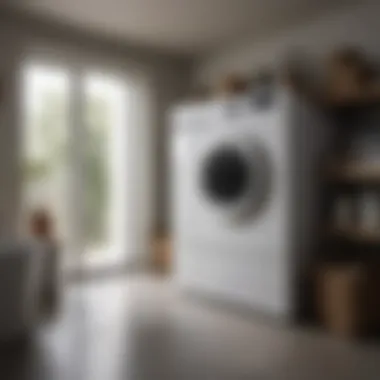

Selecting the right location for dryer vents is crucial. Ideally, vents should exit to the outside of the home without any unnecessary turns or long stretches. Minimal bends in the ductwork enhance airflow. Here are some optimal venting locations:
- Outside Wall: Directly venting to an exterior wall is often the best option, allowing for a short and straight duct.
- Roof Vent: While not the first choice, roofs are sometimes used if ground-level options are unavailable. Ensure there are no obstructions.
- Basement or Crawl Space: If the dryer is placed in these areas, ducts should be placed to exit directly outside, considering any potential moisture issues.
Choosing an optimal venting location helps maintain dryer efficiency and reduce hazards.
Common Mistakes in Placement
There are several common errors that can compromise the effectiveness of dryer vents. Awareness of these can help homeowners avoid costly consequences.
- Long Duct Runs: Placing the dryer far from an outside wall can lead to long duct runs that increase the chance of clogs and reduce efficiency.
- Sharp Bends: Using sharp angles in duct installations restricts airflow. Each elbow adds resistance, making the dryer work harder.
- Improper Materials: Using flexible plastic or vinyl ducts instead of rigid metal ducts is a mistake. Metal ducts are more durable and provide better airflow.
Remember, the National Fire Protection Association recommends using a vent system that is free of obstructions.
By avoiding these mistakes, homeowners can ensure that their dryer functions properly and safely.
Impact on Energy Consumption
Understanding the impact of well-maintained dryer vents on energy consumption is crucial for homeowners. Efficient dryers do not just affect utility bills; they also contribute to overall household safety and appliance longevity. By keeping dryer vents clear of obstructions, you ensure your dryer operates at optimal efficiency, which can lead to substantial cost savings over time. Additionally, clogged vents can cause your dryer to work harder than necessary, increasing both energy usage and the risk of overheating.
Some key points to consider when examining energy consumption related to dryer vent maintenance include:
- Increased operational costs: If your dryer is frequently struggling to remove moisture, it consumes more electricity to complete its cycles.
- Wear and tear on appliances: Excessive friction and stress on the dryer components can lead to quicker deterioration and the need for repairs or replacement.
- Energy waste during peak usage times: Clogged dryers can contribute to energy inefficiency during high demand periods, raising costs further.
Exploring Energy Costs
Energy costs are a significant concern for many households. The dryer, among other appliances, can contribute notably to monthly energy bills. A well-maintained dryer vent can lead to reduced energy expenditures in various ways.
When your dryer is functioning properly, it uses less energy to dry loads. Here are potential elements influencing energy costs:
- Heating efficiency: A clean vent allows hot air to flow freely, reducing the amount of energy required to heat up.
- Cycle duration: With proper ventilation, drying cycles can be shorter, reducing electricity use per load.
- Frequency of use: Users may find they can do laundry less often if their appliance is effective, contributing to further savings.
Long-Term Savings
Investing time and effort to regularly unclog dryer vents leads to long-term financial benefits. Saving on energy bills is just the beginning. The longevity of your dryer and the prevention of safety hazards are also essential factors to consider.
- Reduced maintenance costs: As your dryer remains in peak condition, the need for repairs diminishes, sparing you additional expenditures.
- Extended appliance lifespan: A dryer that functions correctly can last significantly longer, translating to fewer purchases over the years.
- Safety marks: Ensuring efficient venting minimizes fire hazards, which also prevents potential costs associated with damage or insurance claims.
By paying attention to energy consumption related to dryer vents, one can achieve both economic and safety benefits, securing peace of mind in everyday laundry tasks.
Further Resources
When exploring the topic of unclogging dryer vents, it is essential to have access to comprehensive resources that can enhance understanding and aid in practical applications. These resources can provide valuable insights into the significance of dryer vent maintenance, offer detailed instructions for cleaning, and highlight the potential risks of neglecting this important aspect of home care.
Utilizing further resources assures that readers are well-informed and able to make educated decisions regarding appliance efficiency and safety. The integration of these resources enriches the article, providing depth that can facilitate action and reinforce the necessity of regular maintenance.
Recommended Reading
Engaging with specialized literature on dryer vents can be incredibly beneficial. Books and articles focused on home maintenance provide a solid foundation in understanding appliance care. Here are a few suggested titles:
- "The Complete Guide to Home Maintenance" - Offers insights into all aspects of keeping a home functional, including dryer vent cleaning.
- "Common Household Hazards: Prevention and Safety Tips" - Discusses various household risks, emphasizing the dangers of neglected dryer vents.
- "Energy Efficiency at Home" - This book details how maintaining appliances like dryers can significantly impact overall energy consumption.
In addition to books, magazines and journals dedicated to home improvement, such as Better Homes and Gardens or Family Handyman, often feature articles specific to dryer maintenance that can be especially useful.
Useful Websites and Tools
Online resources can further aid individuals looking to understand the intricacies of dryer vent maintenance. Several websites and tools can provide useful information and interactive learning experiences:
- HomeAdvisor (homeadvisor.com) - This site offers a wealth of tips and guides on home maintenance and the importance of dryer vent cleaning.
- Wikipedia (en.wikipedia.org/wiki/Dryer) - Contains comprehensive information about dryer construction and maintenance recommendations.
- Consumer Reports (consumerreports.org) - Provides reviews and recommendations on dryer models, including energy efficiency insights and maintenance.
- Reddit (reddit.com/r/HomeImprovement) - A platform where users share experiences and tips regarding dryer maintenance and troubleshooting.
"Keeping your dryer vent clean is not just about efficiency; it's about safety."
Incorporating these resources can substantially enhance your knowledge base and empower you to maintain your appliances effectively. With the right information at hand, optimizing your dryer should be a manageable task.
Closure
Summary of Key Points
- Recognizing Symptoms: Awareness of symptoms such as longer drying times and unusual odors is paramount. These indicators can help catch problems early before they escalate.
- Cleaning Techniques: Both manual and professional methods can efficiently remove clogs. Identifying when to seek professional help is equally important to avoid potential damage.
- Preventive Practices: Regular maintenance, efficient drying practices, and proper lint trap care can significantly extend the life of the dryer and maintain its efficiency. Scheduling inspections and adhering to best practices can reduce risks and save on energy costs.
Final Thoughts on Dryer Maintenance
Maintaining dryer vents is often overlooked, yet it plays a crucial role in ensuring safety and efficiency in laundry operations. By integrating proper care practices into regular household routines, one can avoid future complications and enhance dryer performance. Investing time in these maintenance strategies pays off by prolonging the appliance's lifespan and improving energy efficiency. Ultimately, understanding and implementing these practices can lead to a safer and more efficient home environment.



